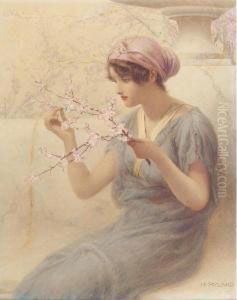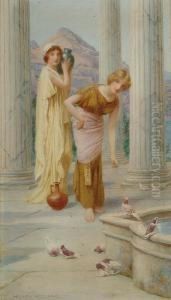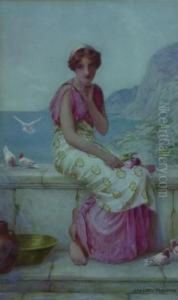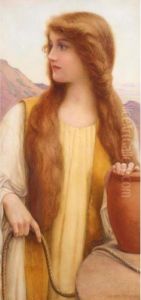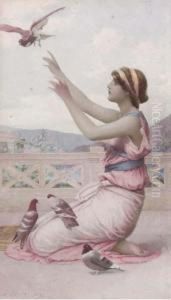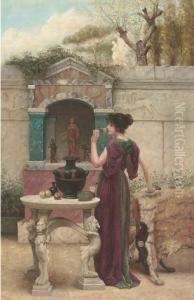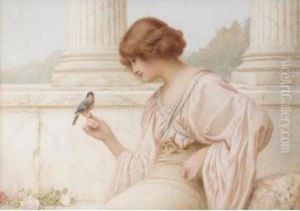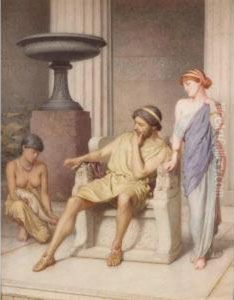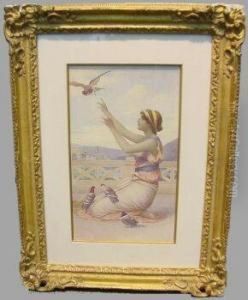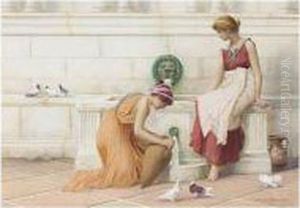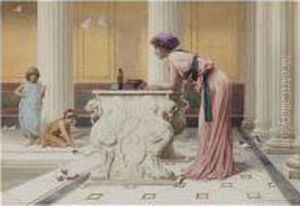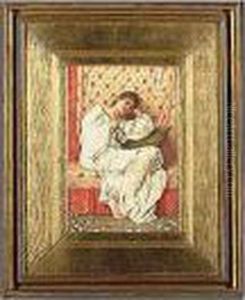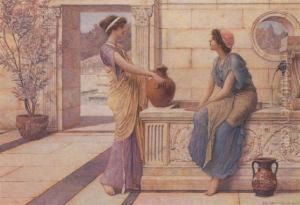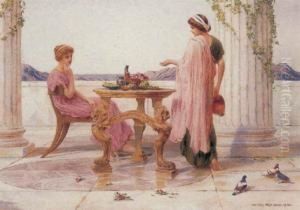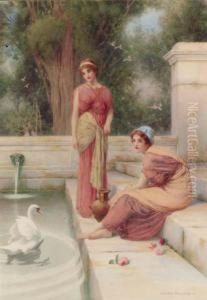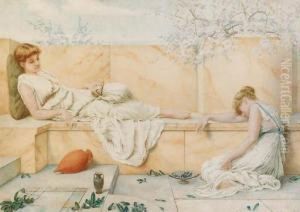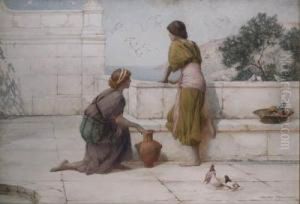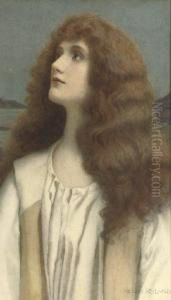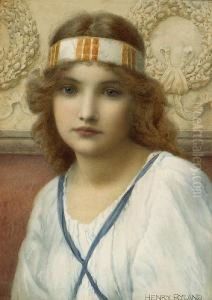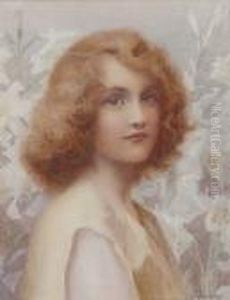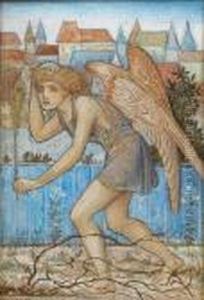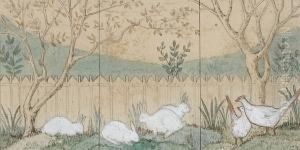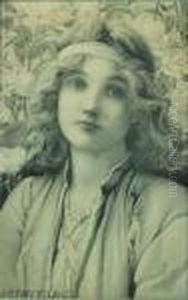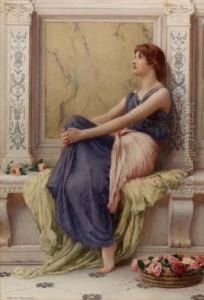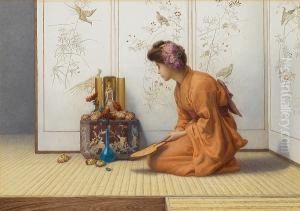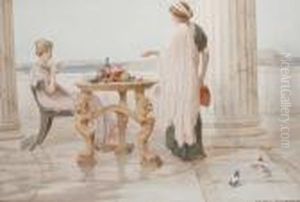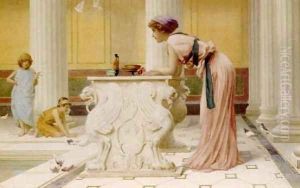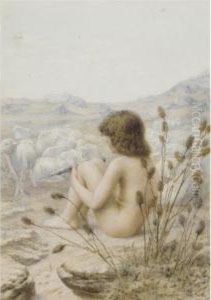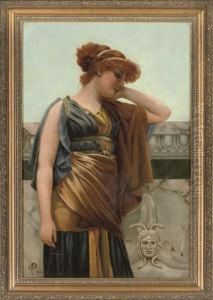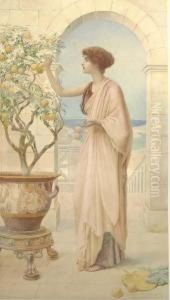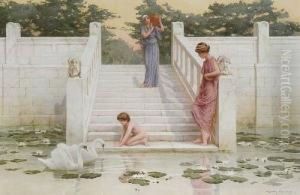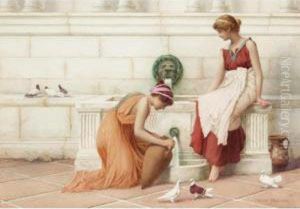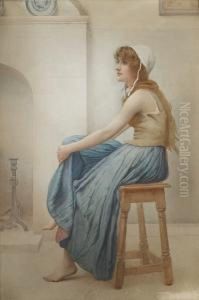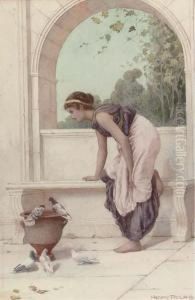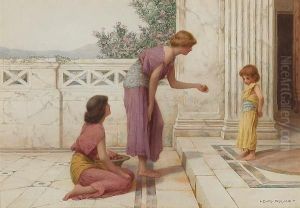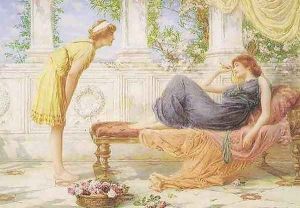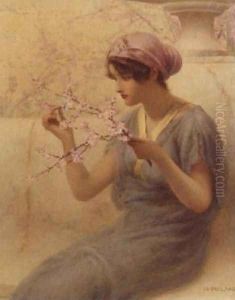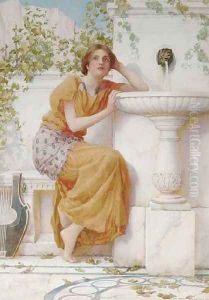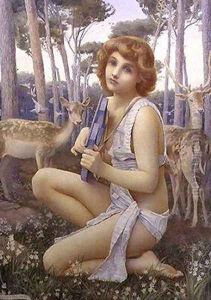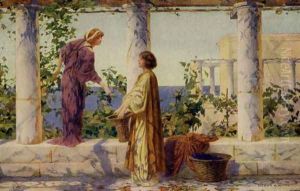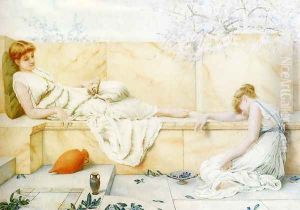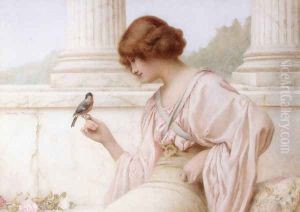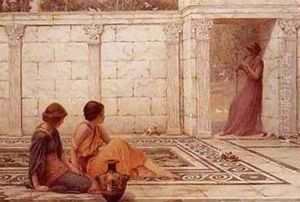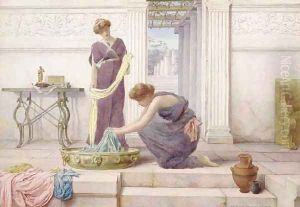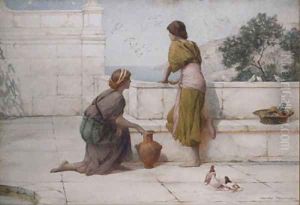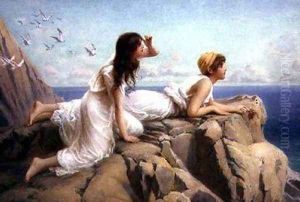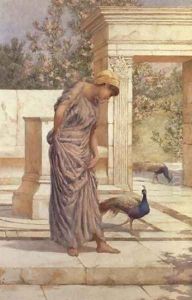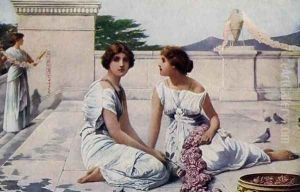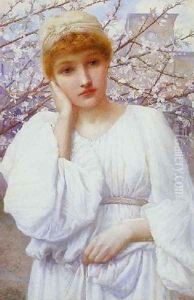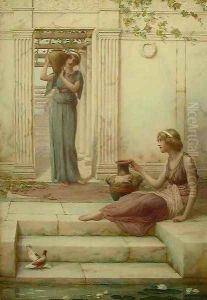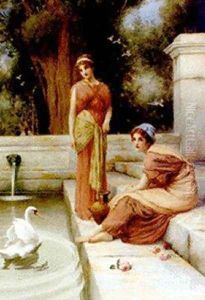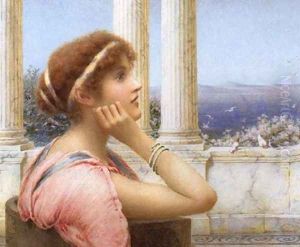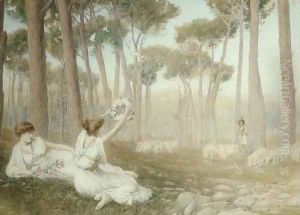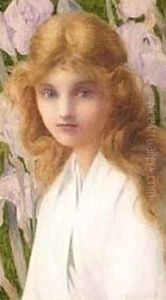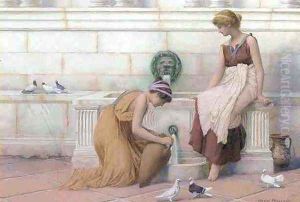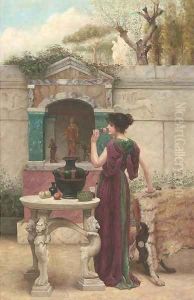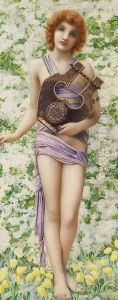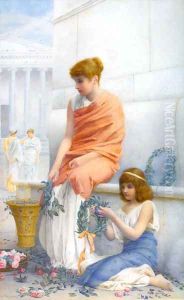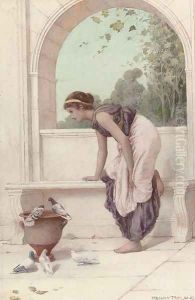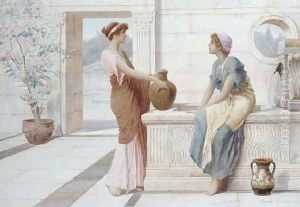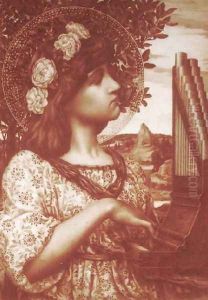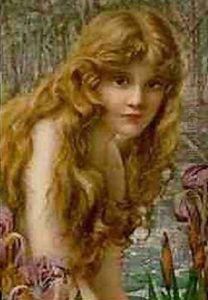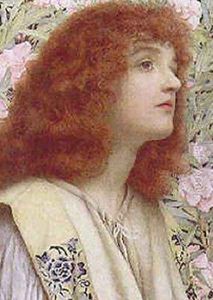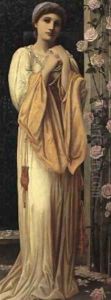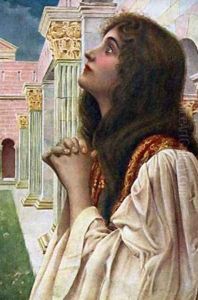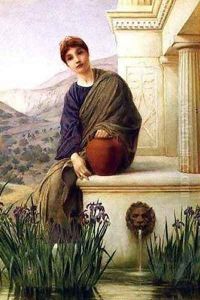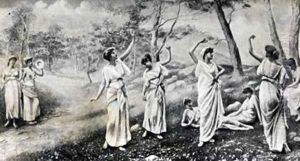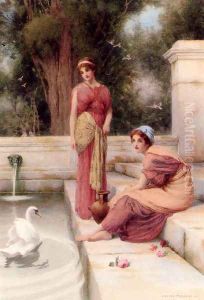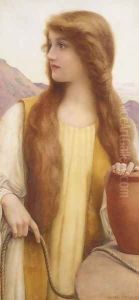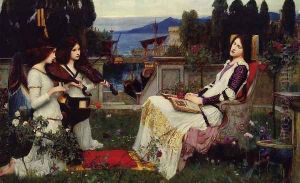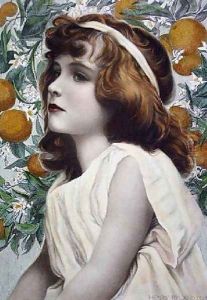Henry Ryland Paintings
Henry Ryland was an English painter, illustrator, and designer known for his exquisite neo-classical style and his use of watercolor and fresco techniques. He was born on January 20, 1856, in Biggleswade, Bedfordshire, England. Ryland received his artistic training at the South Kensington Art School, which would later become the Royal College of Art. He continued his studies at the prestigious Royal Academy Schools and also spent time in Paris under the tutelage of Jean-Joseph Benjamin-Constant and Jean-Léon Gérôme, who were prominent academic painters of the era.
Ryland's work is characterized by its delicate rendering and often featured classical figures set in idyllic landscapes, reminiscent of the Italian Renaissance. He was heavily inspired by the earlier Pre-Raphaelite Brotherhood and sought to achieve a similar level of detail and color in his own work. Despite the rise of Modernism, Ryland maintained his classical approach throughout his career. His subjects were typically drawn from classical mythology and literature, and he was known for his ability to depict the female form with elegance and grace.
As an illustrator, Ryland contributed to various periodicals and books, enhancing the visual appeal of literary works with his elaborate designs. His illustrations often mirrored the themes of his paintings, focusing on romantic and classical themes. He was also a skilled stained-glass designer, and his works in this medium share the same qualities of line and composition found in his paintings and illustrations.
Henry Ryland's career spanned the late Victorian era and extended into the early 20th century. His work was exhibited at the Royal Academy and elsewhere, and he was well-regarded in his time, though he did not achieve the same level of fame as some of his contemporaries. Towards the end of his life, Ryland's style was seen as increasingly outdated, as the art world moved towards more avant-garde movements.
Ryland passed away on February 22, 1924, in London. Today, his work can be found in various art collections and is appreciated for its craftsmanship and representation of the neo-classical aesthetic. While he may not be a household name, Henry Ryland remains a respected figure for those who admire the continuation of classical art traditions into the modern era.
